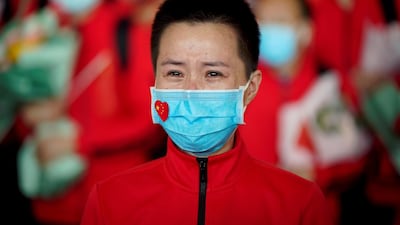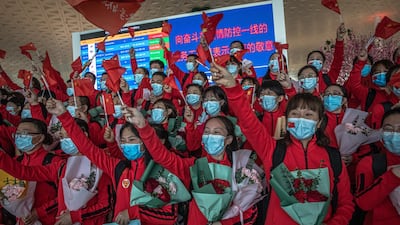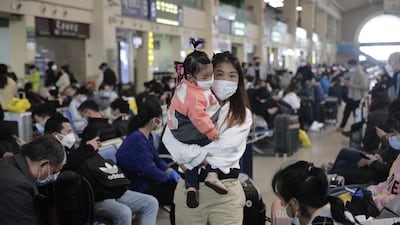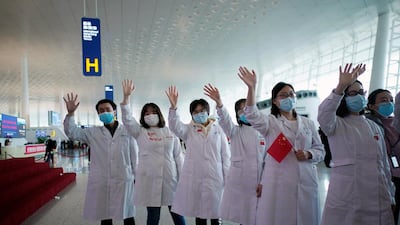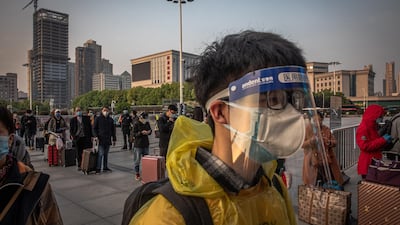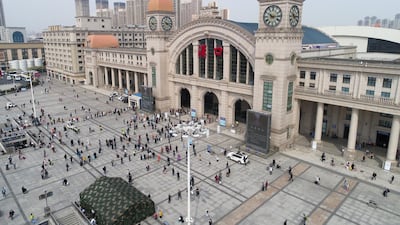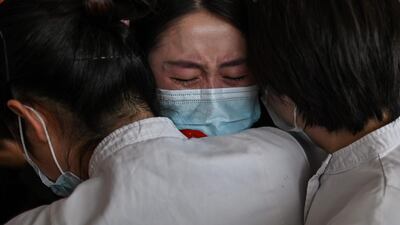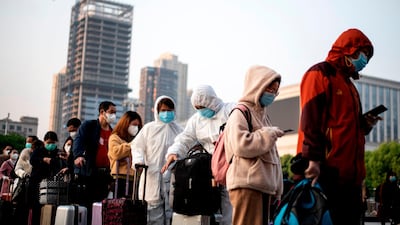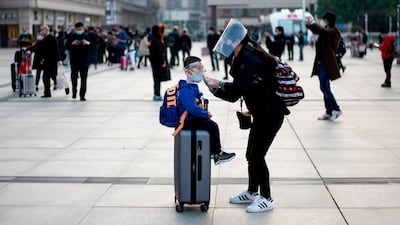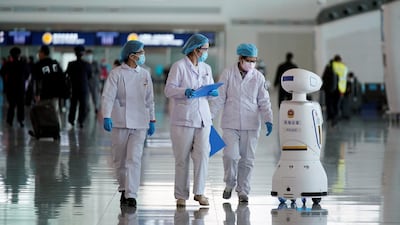Tens of thousands of people left Wuhan on Wednesday after a 76-day travel ban was lifted on the Chinese city where the coronavirus first emerged.
Previously quiet train and bus stations bustled as an exodus began from the city of 11 million, with some passengers wearing hazmat suits.
Up to 55,000 people are expected to leave Wuhan on Wednesday just by train, according to government estimates.
Steady streams of cars hit the road Wednesday morning, with barricades on the city's outskirts dismantled after the ban on outbound travel was lifted at midnight.
Ferries, trams and taxis resumed operations and the airport also opened again for domestic flights, with queueing passengers in protective wear wheeling cases and staff spraying disinfectant on the floor.
State news agency Xinhua said there would be around 200 flights on Wednesday.
A group of medics leaving Wuhan tearfully hugged colleagues from the city goodbye as they prepared to board flights home.
Wuhan led the world with an unprecedented quarantine lockdown on January 23 in a bid to stop the spread of the then-mysterious respiratory virus.
Chinese disease control officials said in January that the virus likely leapt from wildlife to humans at a Wuhan market that sold wild animals for food.
The rest of surrounding Hubei province quickly followed Wuhan, cutting tens of millions of people off from the world.
As the virus spread rapidly around the globe, around half of humanity has been forced into some form of lockdown.
Temperature checkpoints and posters telling workers in Wuhan to keep more than a metre apart at Japanese automaker Honda Motor Co's reopened plant in the Chinese city of Wuhan show how the coronavirus has created a new normal on the factory floor.
The plant, a Honda joint venture with Dongfeng Motor Group was shut in late January when authorities ordered a lockdown in Wuhan in a bid to snuff out the coronavirus, which emerged there late last year.
It reopened on March 11 to resume operations in stages and is now back to pre-virus production levels, Li Shiquan, assistant director of the joint venture's No. 2 final assembly plant, told reporters on Wednesday.
Shopping malls and the citys biggest shopping belt, the Chu River and Han street, reopened on March 30. Long queues, thanks to requirements that customers stand a metre apart, have formed at supermarkets while some residents have taken advantage of the warmer weather to resume their outdoor badminton games and dancing.
Wuhan has reported just three new confirmed infections in the past 21 days and only two in the past two weeks.
But even as Wuhan came back to life, new imported cases in the far northern province of Heilongjiang surged to a daily high of 25, fuelled by an influx of infected travellers crossing the border from Russia.
On Wednesday, Suifenhe city announced restrictions on the movement of citizens similar to the ones Wuhan has endured.
People must stay in their residential compounds and only one person per family can leave once every three days to buy necessities, and must return on the same day, state-run CCTV reported.
China is maintaining strict screening protocols, concerned about any resurgence in infections by virus carriers who exhibit no symptoms and infected travellers arriving from abroad.
China's new coronavirus cases doubled on Tuesday as the number of infected travellers from overseas surged, while new asymptomatic infections more than quadrupled.
New confirmed cases rose to 62 on Tuesday from 32 a day earlier, the National Health Commission said, the most since March 25. New imported infections accounted for 59 of the cases.
The number of new asymptomatic cases rose to 137 from 30 a day earlier, the health authority said on Wednesday, with incoming travellers accounting for 102 of the latest batch.
Authorities do not count asymptomatic cases in their tally of confirmed infections until patients show symptoms such as a fever or a cough. As of Tuesday, 1,095 asymptomatic patients were under medical observation, with 358 of them travellers arriving from abroad.
